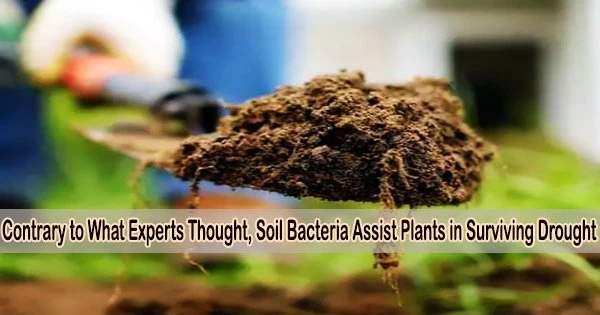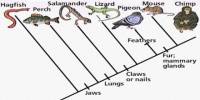Underneath our feet is a complex planet brimming with varied and interrelated life. In times of stress, plants summon bacteria with chemical signals that can release locked nutrients and locate water in soil pores too small for the smallest roots. In exchange, microorganisms receive a secure environment or a sweet beverage.
It’s a classic you-scratch-my-back-I’ll-scratch-yours scenario. Except when it’s not. According to recent research from the University of Illinois at Urbana-Champaign, free-living soil bacteria only care about themselves. This goes against accepted thinking.
The findings are published in the journal Proceedings of the Royal Society B: Biological Sciences.
Researchers from the College of Agricultural, Consumer and Environmental Sciences (ACES) discovered in a multigenerational experiment that bacteria did not respond to plants’ screams for assistance but instead assisted plants in surviving drought. Instead, the environment itself favors bacteria that can survive drought. And while those hardy microbes were doing their thing, they just happened to make plants more drought-tolerant, too.
“It was a surprise because I expected to see evidence of coevolution and mutualism between the microbes and plants. I think people, myself included, forget that just because microbes do something adaptive or beneficial to the plant, it doesn’t necessarily mean they’re doing it for the plant,” said Kevin Ricks, who completed the project as part of his doctoral degree in the Program for Ecology, Evolution, and Conservation Biology at Illinois. Ricks is now a postdoctoral researcher at the University of Toronto.
Some previous studies didn’t actually compare soil with and without microbes, so it’s hard to really implicate the microbes as the driver of the benefit. There are a lot of things that could have been different in the soil, but when we sterilized the microbes away in our experiment, we lost the benefit of the drought adaptation.
Professor Tony Yannarell
Ricks constructed living soil communities in pots with or without plants to discover how bacteria assist plants in coping with drought. He watered half of the pots well and imposed drought conditions in the other half, then repeated these treatments for three generations. The objective was to give plants enough time to express their need for assistance and maybe undergo natural selection, favoring helpful microorganisms.
In phase two of the experiment, Ricks mixed everything up. He again grew plants in soil from phase one and kept the same watering treatments, but some plants were now experiencing drought in soils that had been well-watered for generations, and vice versa.
He expected soil microbes from historically dry pots would have adapted to those conditions, helping plants withstand drought more than microbes from historically wet pots. And that is what he found: Plants experiencing drought were bigger when grown with drought-adapted microbes.
But and this is key that was true for soils grown with or without plants in phase one. In other words, microbial adaptation to drought occurred over time even without chemical signaling from plants. However, even when cultivated with plants years later, they continued to have advantages. It was evidence that these bacteria were acting independently and just inadvertently assisting plants.
The study community came to the conclusion that plants and microorganisms were conversing with one another in a co-evolutionary conversation since no previous studies on the subject had used a no-plant control.
“Our results challenge classical thinking about what counts as a mutual benefit. Mycorrhizae and nitrogen-fixing bacteria are kind of model systems, things that people study when they talk about mutualism. But then there’s this fuzzier set of interactions that we don’t understand yet, but could still wind up having a mutual benefit, or at least a one-way benefit to the plant. I think our approach brings this system into the spotlight,” said co-author Tony Yannarell, associate professor in the Department of Natural Resources and Environmental Sciences, part of the College of ACES at Illinois.
Before implementing treatments in phase two, the researchers also sterilized selected phase-one soils. Plants in those containers with historically dry soils fared no better under drought.
“Some previous studies didn’t actually compare soil with and without microbes, so it’s hard to really implicate the microbes as the driver of the benefit,” Yannarell said. “There are a lot of things that could have been different in the soil, but when we sterilized the microbes away in our experiment, we lost the benefit of the drought adaptation.”
Because the microorganisms used in the experiment were unidentified, the researchers are unsure of the precise way in which they helped the plants. However, according to Ricks, a number of activities involving soil bacteria may help plants endure stress.
“Microbes are responsible for nutrient and carbon cycling, so whether or not they’re actually facilitating plant access to water, they could still be freeing up nutrients that make the plant healthier and more resilient to stress,” he said.
Ricks was hesitant to declare that his work will change the course of ecological research because it was a greenhouse experiment that was limited to one sort of environmental stress and free-living soil bacteria. But he believes that it will inspire other researchers to take no-microbe and no-plant controls into account in upcoming investigations. They could possibly provide light on what is actually occurring beneath our feet.
















